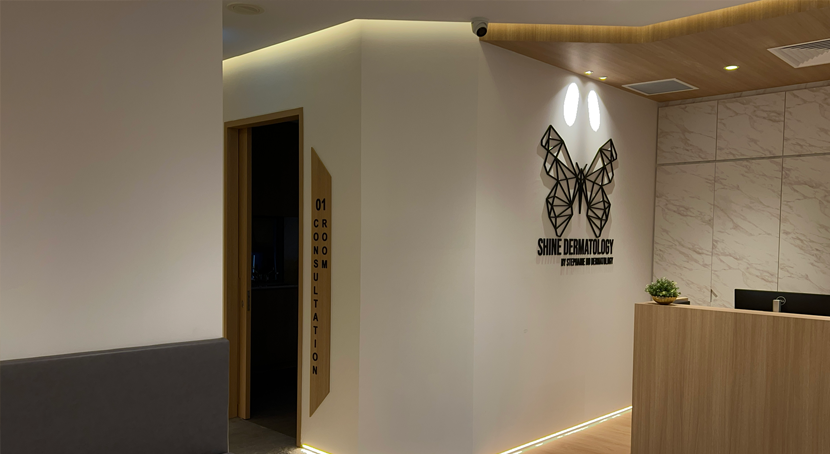Types of Cysts We Treat
-
Epidermoid & Pilar Cysts: Common on the scalp, face, or trunk.
-
Pilonidal Cysts: Occur near the tailbone, often requiring surgical attention.
-
Ganglion Cysts: Fluid-filled lumps near joints, affecting movement.
Our Treatment Approaches
Our dermatologists customise treatment plans based on cyst type, size, location, and infection status. Common treatments include:
-
Surgical Excision
Removal of the entire cyst sac to prevent recurrence. Performed under local anaesthesia using a minimal excision technique to reduce scarring. -
Incision and Drainage
Used for painful or infected cysts to provide immediate relief. Follow-up excision may be required once inflammation resolves. -
Intralesional Steroid Injections
Corticosteroids are injected directly into inflamed cysts to reduce swelling and discomfort. -
Oral Antibiotics
Prescribed for infected cysts to manage bacterial inflammation prior to or following drainage. -
Laser Treatments (select cases)
CO₂ or Nd:YAG lasers may be used to address superficial cysts or milia. Not suitable for deeper or encapsulated cysts, as recurrence is likely without sac removal.
How Cyst Removal Works
Each treatment is designed to address the source of the cyst while protecting surrounding tissue and achieving a cosmetically satisfactory outcome:
-
Surgical Excision: The gold standard for complete removal.
-
Laser Ablation: Used to vaporise superficial cyst linings (e.g., milia).
-
Punch Excision: Ideal for small, non-inflamed cysts with minimal scarring.
-
Intralesional Triamcinolone: Reduces cyst volume in inflamed lesions.
When to Consider Treatment
Consider seeing a dermatologist if your cyst:
-
Becomes red, swollen, or repeatedly infected
-
Grows rapidly or causes discomfort
-
Is located in a cosmetically sensitive area
-
Impacts mobility (e.g., around joints)
Early treatment can prevent complications like scarring or secondary infection.
Treatment Overview
|
Treatment |
Best For |
Sessions |
Recovery |
|
Surgical Excision |
Large or recurrent cysts |
1 session |
7–14 days; stitches removed |
|
Laser Ablation (if suitable) |
Small superficial cysts, milia |
1–2 sessions |
Mild redness, 1–3 days |
|
Intralesional Injections |
Inflamed or painful cysts |
1–3 sessions, 4 weeks apart |
Swelling subsides in 2–4 weeks |
|
Incision & Drainage |
Infected cysts needing urgent relief |
1 session + follow-up |
Immediate relief; excision later |
Safety & Aftercare
Our dermatologists use sterile, evidence-based methods to reduce risks. Post-treatment care includes keeping the area clean, applying prescribed ointments, and avoiding physical exertion:
-
Surgical Risks: Low risk of infection or bleeding (<3%); minimised with proper care.
-
Laser Risks: Risk of pigment changes in darker skin; mitigated with tailored settings.
-
Steroid Injections: Limited to 3 sessions to avoid skin thinning or discolouration.
Frequently Asked Questions
Is cyst removal painful?
Most procedures are done under local anaesthesia. Patients typically experience minimal discomfort. Mild soreness may follow, managed with over-the-counter pain relief.
Will the cyst come back?
Excision removes the entire sac, with a recurrence rate below 5%. Drained cysts without sac removal have a higher recurrence risk.
Can I remove a cyst at home?
No. Squeezing or puncturing a cyst can lead to infection, scarring, and incomplete removal. Always consult a professional.
How visible will the scar be?
Scars typically fade over 6–12 months. Silicone gel and resurfacing treatments can improve the appearance if needed.
Are there non-surgical options?
Yes. Small, non-inflamed cysts may respond to steroid injections. Laser ablation may help with superficial cysts. However, surgery remains the most definitive option.
Are cysts cancerous?
Most are benign. Suspicious cysts that grow rapidly or have irregular features may be sent for histopathological analysis.
How should I prepare for cyst removal?
Avoid blood-thinning medications like aspirin or ibuprofen 5 days before the procedure. Inform your doctor of any allergies or medical history.
Is laser effective for all cysts?
Laser is only effective for superficial cysts. Deeper cysts should be surgically removed to avoid recurrence.
What does it cost?
Costs range from SGD 300 for drainage to SGD 1,500 for excision. MediSave may be claimable for medically necessary cases.
Can children undergo treatment?
Yes. Local anaesthesia is suitable for teens. Younger children may require general anaesthesia depending on the case.
When can I resume exercise?
Avoid heavy lifting and sweating for 7 days. Light activities can resume after 48 hours.
What’s the difference between a cyst and a boil?
Cysts are non-infectious sacs. Boils are infected hair follicles filled with pus and typically treated with antibiotics.
Do hormonal changes cause cysts?
Yes. Conditions like PCOS may increase oil production, contributing to cyst formation. Medical management can help reduce recurrence.
Does drainage leave a hole?
A small opening may remain but typically closes within days. Proper wound care is essential.
Are ganglion cysts linked to arthritis?
They are more often associated with joint irritation than arthritis. Treatment includes aspiration or surgical removal if necessary.
Book a Consultation
Don’t let cysts affect your comfort or confidence. Contact Shine Dermatology today to explore safe, effective removal options tailored to your needs.



